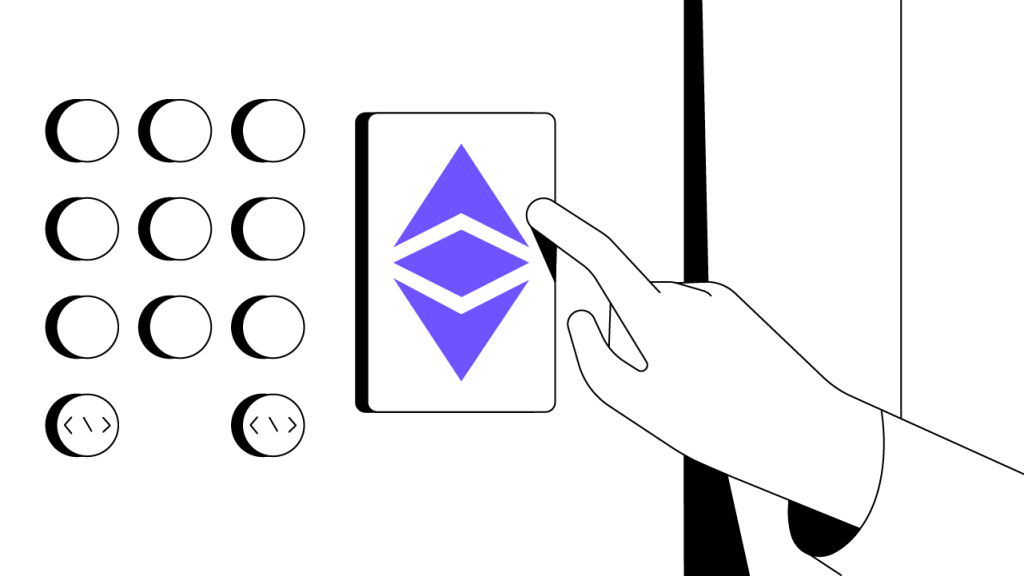Contents
Ethereum Classic (ETC): A Rift in the Blockchain Community
In the life of a blockchain, sometimes a hard fork simply must happen. But though usually organic, they’re rarely without controversy.
Updated October 31, 2023 • 4 min read

Summary
Ethereum Classic (ETC) grew out of an ideological and ethical rift in the Ethereum community that provokes controversy to this day. In 2016, a significant hack was carried out on a third-party application running on the Ethereum (ETH) blockchain, which resulted in the theft of millions of dollars worth of ether, or ETH. In response, the Ethereum blockchain underwent a hard fork to essentially reverse the hack from the official ledger and return the stolen ETH to its original owners.
In contrast, the other branch of this fork kept the official ledger, that included the hack, unchanged — aiming to preserve a 100% immutable ledger. In other words, the two resulting blockchains differed in only one way: One still contained the record of the hack and the stolen ETH, while the other essentially wound back the clock as if the hack had never happened. The edited blockchain preserved the Ethereum moniker, while the original/unchanged blockchain became known as Ethereum Classic.
Contents
The Origin of Ethereum Classic
There are many reasons why blockchains undergo hard forks and divide themselves into separate blockchains. Sometimes forks are the result of technological upgrades. Other forks result from deep community disagreements on proposed protocol changes which ultimately split the project and its backers into irreconcilable factions. Such protocol changes can arise from forward-looking efforts to improve existing functionalities, or they can arise in reaction to damage caused by bugs and hacks. The latter instance resulted in the Ethereum fork, which led to the creation of the Ethereum Classic (ETC) blockchain.
In 2016, an application on the Ethereum blockchain (known as The DAO) was hacked, leading to the theft of around 3.6 million ether (ETH) — worth around $50 million USD in 2016 — which subsequently rose to be worth billions of dollars. To further contextualize the severity of this hack, there were around 72 million ETH in circulation at the time, so the hackers stole around 5% of all ETH in existence.
To erase the hack from Ethereum’s ledger and return the money to its original owners, Ethereum core developers chose to implement a hard fork. The newly created ledger, which reversed the hack and returned the stolen ether, became the “main” Ethereum blockchain, and the original version of the ledger was renamed Ethereum Classic as a parallel network that was not compatible with the new main branch. A majority of users, especially victims of the hack, preferred the version of Ethereum that erased the hack. However, some users who viewed immutability as paramount chose to remain faithful to the original ledger, Ethereum Classic.
Ethereum vs. Ethereum Classic
The controversial divide between Ethereum and Ethereum Classic boils down to a philosophical debate which weighs two divergent choices:
A distributed ledger’s revised blockchain which was altered in a way that erased a successful cybertheft.
A truly immutable blockchain with a permanent record of the network’s entire history, including a successful cybertheft.
Ethereum remains much more popular than its unedited counterpart, indicating where most of the cryptocurrency community landed on this hotly debated issue. Further, Ethereum has the support of Vitalik Buterin, the Ethereum project’s main creator, who is widely regarded as one of the most reputable and influential figures within the Ethereum community and the entire blockchain industry.
However, proponents of Ethereum Classic argue that the ETC hard fork hypocritically enabled the very thing that blockchain technology is meant to prevent — subjective human manipulation. As a result, many idealists stand by Ethereum Classic and its associated cryptocurrency, ETC. Notwithstanding the good intentions of the edited ETH branch, ETC’s proponents categorically reject the reasoning that led to the hard fork in the first place. Many of these individuals believe that any changes to a blockchain ledger (even well-intentioned ones) go against the ethos of the “code is king” mentality that many people associated with blockchain in the first place. Ethereum Classic proponent’s argue that immutable transactions are an irrefutable tenet of blockchain technology that set it apart from the manipulations that many complained of within the traditional global financial system, asserting that immutability should not be compromised in any context.
Other cryptocurrencies, including bitcoin (BTC), have experienced similar debates. The 2017 Bitcoin Cash (BCH) hard fork from Bitcoin was hotly debated. In a more direct comparison to the ETH vs. ETC controversy, hackers stole more than 7,000 BTC (worth around 41 million USD at the time) from the Binance crypto exchange in 2019. The exchange’s founder, Changpeng Zhao, suggested that the Bitcoin community roll back the Bitcoin blockchain, just as Ethereum had done in 2016. In this instance, however, the suggestion did not materialize into community action — perhaps in part because (unlike Ethereum’s founder Vitalik) Bitcoin’s pseudonymous founder Satoshi Nakamoto ceased any public involvement in the project in 2011, and his, her or their identity is unknown. In other words, because of Satoshi’s absence, Bitcoin’s leadership is arguably more decentralized by default than Ethereum’s.
Structure of Ethereum Classic
The Ethereum Classic protocol is essentially a clone of the original Ethereum protocol. Both Ethereum Classic and Ethereum are smart contract platforms that allow users to build decentralized applications (dApps) on their respective blockchains, and they remain similar from a general functional perspective, although Ethereum has subsequently developed a considerably wider array of functionalities over time. The chains are identical up until block 1,920,000 (where the attack occurred). It is only after this block that they diverge. As a result, significant updates to the Ethereum protocol after this point (including Ethereum 2.0) are not reflected in the Ethereum Classic protocol, and vice versa.
The Future of Ethereum Classic
Foreshadowing a change of heart, Ethereum Classic has recently undergone several protocol upgrades that are aimed at making the protocol more interoperable with the Ethereum protocol. Two recent Ethereum Classic protocol upgrades — Atlantis (in 2019) and Agharta (in 2020) — signal the Ethereum Classic community’s intent to build technological bridges between Ethereum Classic and other communities, including Ethereum. These updates were carried out through mandatory hard forks, which required Ethereum Classic users to upgrade their software in order to comply with the updated rules of the Ethereum Classic network. These updates may signify an ongoing shift toward increased interoperability between these two blockchains. While some have strongly opposed the various splits and forks in the overall Ethereum ecosystem, others believe that “forks are freedom,” and that they allow both blockchains to develop democratically as their respective communities see fit.
Cryptopedia does not guarantee the reliability of the Site content and shall not be held liable for any errors, omissions, or inaccuracies. The opinions and views expressed in any Cryptopedia article are solely those of the author(s) and do not reflect the opinions of Gemini or its management. The information provided on the Site is for informational purposes only, and it does not constitute an endorsement of any of the products and services discussed or investment, financial, or trading advice. A qualified professional should be consulted prior to making financial decisions. Please visit our Cryptopedia Site Policy to learn more.

Is this article helpful?
 Powered by
Powered by 


